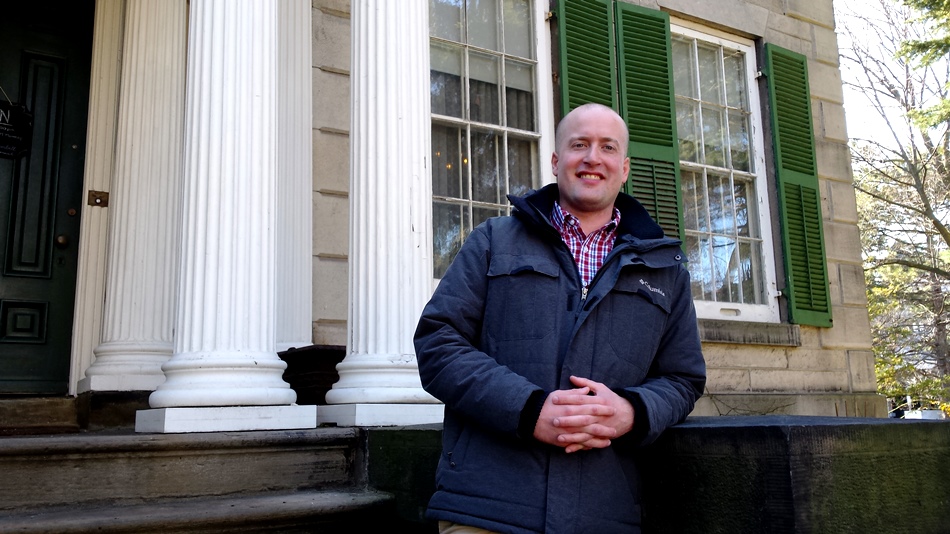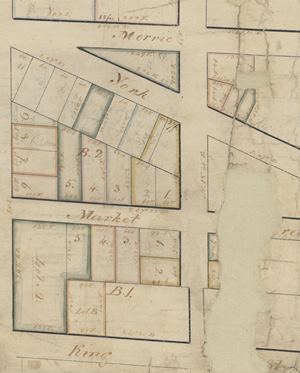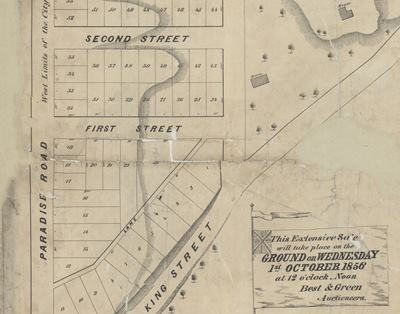Mapping a career that preserves Hamilton’s heritage

Jeremy Parsons ’15 in front of Whitehern Historic House, a national historic site near City Hall, where he now works to preserve Hamilton’s architectural heritage.
Researching 19th-century maps while a grad student helped Jeremy Parsons ’15 chart his path to a career as a cultural heritage planner.
“I’ve always been fascinated by the idea of making a difference on the landscape,” says Parsons. “That’s what drew me to urban planning.”
When he came to McMaster in 2012 to work on his master’s, he specialized in urban historical geography. His supervisor was geographer Richard Harris, a professor in McMaster’s School of Geography and Earth Sciences. Parsons wrote his thesis on the development history of Ancaster and served as a research assistant in urban geography.
Parsons also worked for two years as a student assistant in the Lloyd Reeds Map Collection of Mills Memorial Library. He was tasked with researching the correct geography and historical significance of McMaster’s entire collection of original survey plans of the local Hamilton area.
“These are really fascinating maps,” says Parsons. “It’s quite a snapshot of what Hamilton used to be like.”
 “Jeremy’s research and visual identification skills, coupled with his knowledge and love of both geography and history, were indispensable to our 19th Century Maps of Hamilton project,” says Gord Beck, Map Specialist in the Lloyd Reeds Map Collection. Beck notes these maps are available online to the general public.
“Jeremy’s research and visual identification skills, coupled with his knowledge and love of both geography and history, were indispensable to our 19th Century Maps of Hamilton project,” says Gord Beck, Map Specialist in the Lloyd Reeds Map Collection. Beck notes these maps are available online to the general public.
Parsons’ duties included digging up long-lost background information and pinpointing locations for original surveys and plans that dated back to the early 1800s. The task was made all the more challenging, given that many street and place names had changed since those bygone days. He even discovered a lost village that had been planned, but never saw the light of day. “A bit of forgotten history.”
Parsons also worked with maps in a rather more 21st-century context at the Lewis & Ruth Sherman Centre for Digital Scholarship, also located at Mills Library. The recipient of a Sherman Centre Graduate Fellowship in 2014/15, he explored digital technology as it applied to his master’s research on neighbourhood change over time.
Parsons credits Gord Beck as well as Jason Brodeur, Manager of Maps, Data, GIS, and Margaret Rutten, Maps Metadata Specialist, for their encouragement and support.
As he mapped out life after grad studies, Parsons put his library experience to good use. After a contract with a heritage consultant, he landed his current position at the City of Hamilton last September. One of only two cultural heritage planners, he oversees heritage properties in Hamilton’s suburban and rural areas.
“We look after the built heritage and archaeological resources in the city,” Parsons says. They also work to “sensitively integrate” heritage characteristics or structures into new development. He notes the city is on the cusp of great change – all the more reason to preserve and protect Hamilton’s unique architectural legacy.
Does his library experience help him in his new job? “Well, I regularly use the 19th-century map database that I helped to put together!”



